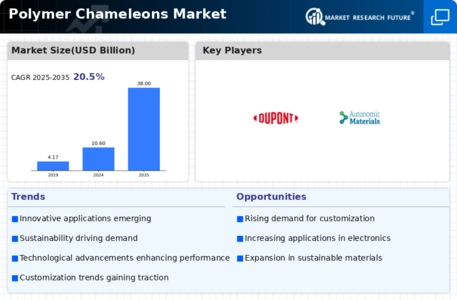Market Analysis
In-depth Analysis of Polymer Chameleons Market Industry Landscape
Polymer chameleons are well-known for their sensitive nature, which allows them to display changes in their characteristics in reaction to external stimuli such as changes in temperature, pH, or light. Because of their adaptability, they are appealing for a wide variety of applications across a variety of sectors, ranging from healthcare to fabrics that are intelligent. As a result of its applications in drug delivery systems, tissue engineering, and bioresponsive implants, the healthcare industry is a prominent driver for the market for polymer chameleons. The capability of these polymers to react to certain stimuli and adapt to biological settings is a significant factor that contributes to their enhanced value in medical applications. The creation of smart fabrics and wearable technologies makes extensive use of polymer chameleons throughout the process. The fact that they are sensitive makes it possible to create textiles that can alter their color, react to changes in temperature, or adapt their permeability, all of which contribute to advancements in the textile business. The fact that some polymer chameleons are biodegradable helps to alleviate worries over the spread of plastic pollution. As regulatory demands and consumer preferences continue to favor sustainable materials, the creation of environmentally friendly alternatives, which contribute to the dynamics of the market, is becoming more important. Although polymer chameleons are most often used in the healthcare and textile industries, they also have uses in other fields, including agriculture, electronics, and packaging. Because of their capacity to adjust to a variety of conditions and stimuli, these polymers have the potential to expand their market reach across a wide range of sectors. Concerning scalability, manufacturing costs, and the achievement of constant performance, there are problems that persist despite the fact that they possess promising properties. It is essential to find solutions to these problems in order to achieve broad acceptance and commercial development. For the purpose of increasing market penetration, the commercialization of polymer chameleons requires the formation of strategic alliances, investments, and marketing activities among other things. In order to
One of the factors that drives the dynamics of the market for polymer chameleons is the capacity to tailor them to particular applications. One factor that contributes to the adaptability of these polymers is the fact that manufacturers are concentrating their efforts on providing individualized solutions to fulfill the specific needs of various sectors.





Leave a Comment